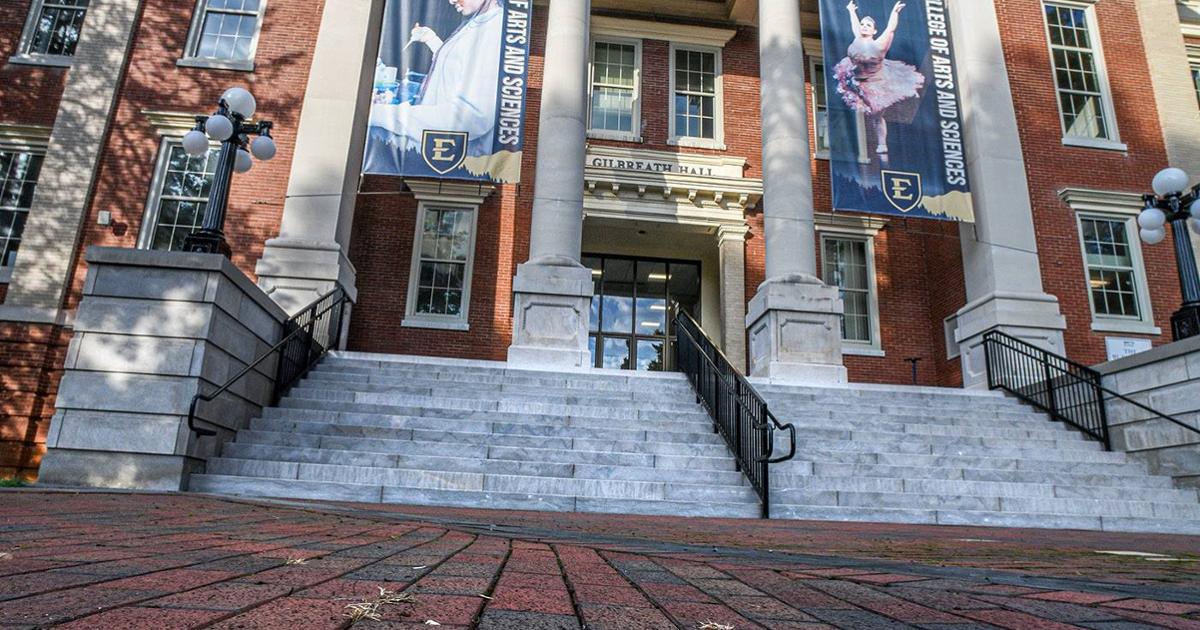Unveiling history, ETSU exploring the writings of first president
Sidney Gilbreath was the first president of East Tennessee State University, then called East Tennessee State Normal School, from 1911-25.
The Archives of Appalachia has recently curated an online exhibit, “Presidential Ponderings: The Writings of Sidney Gilbreath,” showcasing his published writings from the 1920s and for the Johnson City Press-Chronicle,
which ran from 1943-85.
“He was an intelligent and caring man, but he had no tolerance for slackers or ignorance,”
said Sandy Laws, curator of the exhibit. “And by ignorance, I mean those who do not
take the time to find out all the information about something before they get angry
and speak out about it. He was a man of facts.”
Gilbreath is well known for choosing the site for the original administration building,
now called Gilbreath Hall. He went against the spot the committee favored, a site
on a steep hill to showcase the beauty of Johnson City – most likely where the Davis
Apartments are today.
The president, it turns out, was concerned about the practicality of forcing workers to haul materials up the incline. Gilbreath also oversaw the construction of the first library on campus, now the beloved Reece Museum.
Gilbreath was born in 1869, a mere four years after the American Civil War ended.
He died in 1961.
His writings are “very true to the period in which they were written,” Laws said,
noting that English and history students could well take an interest.
What is especially striking is Gilbreath’s strong advocacy for education and teachers’
rights.

He wrote passionately about how underpaid and mistreated the profession was. East
Tennessee State Normal School was originally a two-year teacher’s college and expanded
into a four-year teacher’s college that awarded bachelor’s degrees under Gilbreath.
“The most important of our internal problems is the education of its citizenship ...
this nation is becoming more poorly educated in the schools as a result of the war.
The better teachers must be kept by better salaries,” wrote Gilbreath during World
War II.
During his tenure, Gilbreath oversaw multiple new features for the college. Some of
those included:
The organization of the alumni association
The first football team
Debating teams
The first yearbook, “Old Hickory”
The student army training corps
The first school newspaper, “The Chalkline”
Laws is only partially through 12 folders of Gilbreath’s writings and is publishing
new batches of content monthly.
His distaste for daylight saving time, critique of the imagination of the American
people and strong opinions over the importance of having good penmanship are just
a few of the topics covered in his writings. Gilbreath’s 80-page autobiography, “Good
Morning, Professor,” is also included in the exhibit.
Part of the Center of Excellence for Appalachian Studies and Services at ETSU, the Archives of Appalachia is home to scores of documents, many that are unique to the area. Personal letters, images and even sounds note what life was like generations ago in the region.
The public is welcome to peruse digital collections, as well as pay a physical visit.
Learn more at etsu.edu/cas/cass/archives/.
East Tennessee State University was founded in 1911 with a singular mission: to improve the quality of life for people in the region and beyond. Through its world-class health sciences programs and interprofessional approach to health care education, ETSU is a highly respected leader in rural health research and practices. The university also boasts nationally ranked programs in the arts, technology, computing, and media studies. ETSU serves approximately 14,000 students each year and is ranked among the top 10 percent of colleges in the nation for students graduating with the least amount of debt.
Stay in Touch
Follow ETSU on Social
 Stout Drive Road Closure
Stout Drive Road Closure